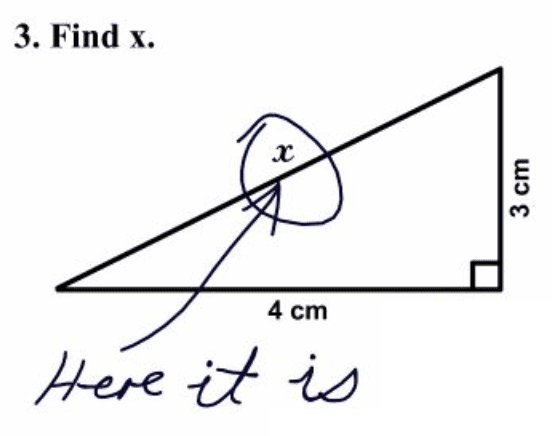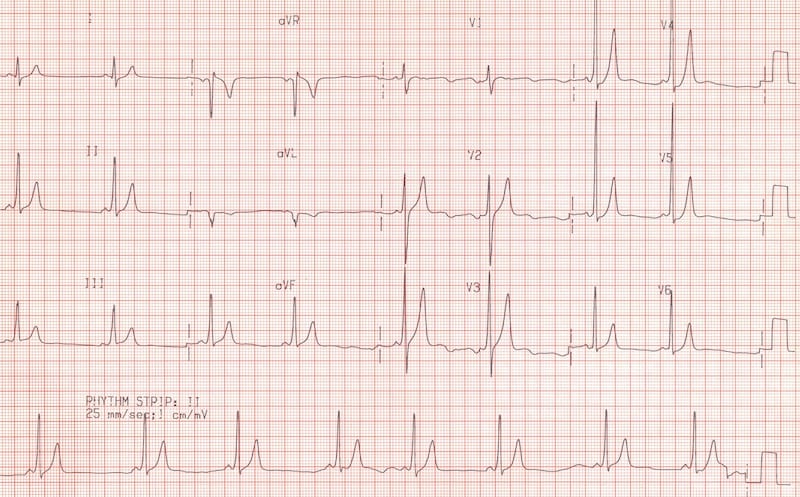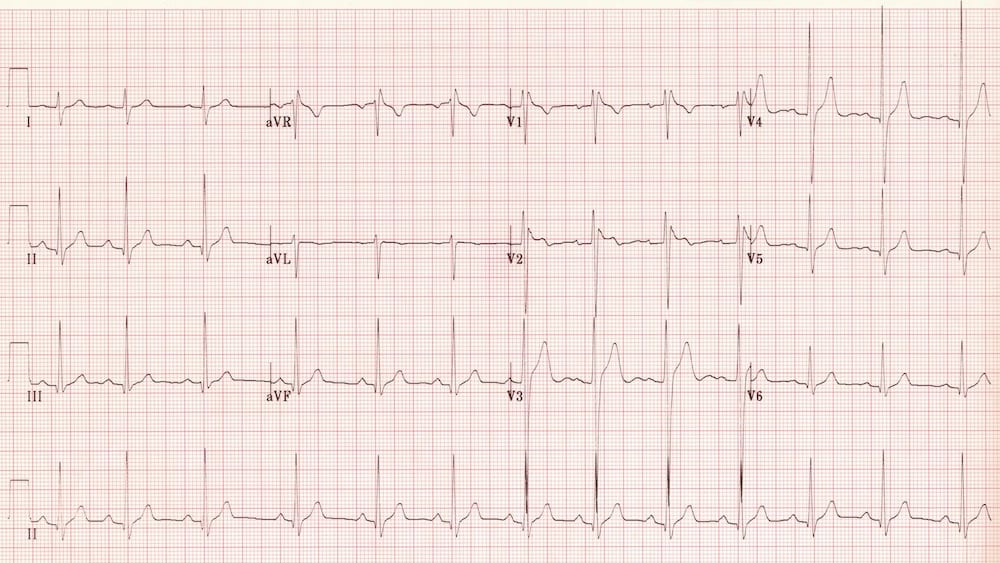Super Axis Man SAM
Who is SAM?
As a routine part of ECG analysis, we need to determine the ECG AXIS. It isn’t really enough to just whimper… “Is it normal?” So, to help understand axis a tiny bit…I need to introduce you to SAM – the Super Axis Man
Building SAM – the Super Axis Man
(1) Draw a circle and put SAMs head on the top.
Note: SAM is smiling today because he is learning something…
(2) Now add his arms and legs…
(3) Now for some labels…
- Right Arm (aVR)
- Left Arm (aVL)
- Then SAM’s non-gender specific Fiddly-bits (aVF)
- He has a tickling stick (I) under his left armpit
- and finally two supporting splints (II) and (III) – with these supports, SAM is happy and is still smiling…
(4) Then, we add SAM’s degrees
- Note: SAM has a lot of degrees because he studied long and hard to become Super-Axis-Man
- The degrees go in lots of 30. They are 0°, MINUS 30°, +60°, +90°, and +120°.
- Start at 0° at lead I, add MINUS 30° to aVL, then +60° to II, +90° to aVF, and +120° to III.
- If you want to you can add +210° to aVR (which may also be called -150°, just to confuse things!).
(5) Now for some 5th grade maths
- Using a right angled triangle
- SAM tells you that there are several right angled triangles in this diagram. But, the simplest one to use is the one that starts from 0° and ends at 90°. That is, between I and aVF
- So, we plot the NET deflection of the QRS complex in lead I on SAM, and then we plot the NET deflection of lead aVF. We draw a line to connect the two, and BINGO, there is your axis!
- Confused?
- Let’s go through a couple of worked examples. (Note: I will use the term squares here to indicate small squares or millivolts, in this setting the terms are essentially interchangeable.)
ECG Axis Worked Examples
ECG 1
- The deflection of the QRS complex in I is about 7 squares up and 3 square down.
- The NET DEFLECTION = +4 squares.
- The deflection of the QRS complex in aVF is about 16 squares up and 1 square down.
- The NET DEFLECTION = +15 squares.
- Let’s plot this on SAM, using the red arrows…
At the intersection of these two lines, in green, we see, the axis is about +75°.
ECG 2

- The deflection in I is 5 squares up and 5 squares down.
- NET DEFLECTION in Lead I – is no squares!
- Because the net deflection is NIL, this lead is called “ISOELECTRIC”
- Deflection in aVF is about 17 squares up and 2 squares down.
- NET DEFLECTION in aVF is +15 squares
- Using SAM, we plot NOTHING on I, and +15 squares towards aVF (red) .
- The axis (green arrow) is 90!
- Interestingly, this fits in with one of our shortcuts. “The axis is 90° from the isoelectric lead!”.
- The axis IS INDEED 90° from lead I.
ECG3 (be careful!)
- In Lead I, the deflection is 1 down and 8 up.
- The NET DEFLECTION = PLUS 7 squares.
- In aVF, the deflection is 1 square up and 11 squares down!
- The NET deflection is = MINUS 10 squares.
- Let’s plot this on SAM – and be careful with aVF…
- Here, because the NET deflection in aVF is NEGATIVE, we go away from aVF, or upwards!
- The axis is MINUS 45.
- Interestingly, this is also an isosceles right angle triangle (the two short sides are equal length).
Notice that SAM is still smiling, despite what we threw at him! With practice, you can draw SAM in your head. And if you are ever at a hospital not far from here, and see SAM on an ECG, you know I’ve been lurking…
Why is knowing the exact axis useful?
- Well, for one, you can show up all those wannabe cardiology registrars who think they know ECGs (this is my personal favourite reason).
- But, secondly, you can tell if the axis has changed WITHIN NORMAL LIMITS. (e.g. if the axis goes from 0 degrees to 90 degrees, then that is a significant shift, but you would never know unless you calculated it. You may even be tempted to call it “Normal”, and walk away from a patient with right heart strain and massive PE.)
Tips and tricks…
aVL and aVR confusion is the most common ECG placement error
- So, you can see if you swap aVR and aVL around, then I, II and III will all be miscalculated. Try it on a patient! When you swap aVR and aVL around, III becomes II, and vice versa, and I becomes anti-I
- In this circumstance SAM doesn’t work!
- A quick way to check is to look at aVR and aVL. aVR should have inverted P-waves, QRS-complexes and T-waves. Also, aVL and aVR are often mirror images of each other.
Another common error on SAM is plotting the wrong way with aVF
- If the NET deflection is +3 in aVF, then we need to plot DOWN towards aVF on SAM.
- Similarly if the NET deflection is -5 in aVF, then you need to plot UP, away from aVF!
Once you master axis using SAM then, try your luck against the computer
- Once you start getting within 5-10 degrees of the computer, then start betting lunch money or cappuccinos against your residents. Ah, an endless supply of free coffee…
Related Topics
LITFL Further Reading
- ECG Library Basics – Waves, Intervals, Segments and Clinical Interpretation
- ECG A to Z by diagnosis – ECG interpretation in clinical context
- ECG Exigency and Cardiovascular Curveball – ECG Clinical Cases
- 100 ECG Quiz – Self-assessment tool for examination practice
- ECG Reference SITES and BOOKS – the best of the rest
Advanced Reading
- Brady WJ, Truwit JD. Critical Decisions in Emergency and Acute Care Electrocardiography
- Surawicz B, Knilans T. Chou’s Electrocardiography in Clinical Practice: Adult and Pediatric
- Wagner GS. Marriott’s Practical Electrocardiography 12e
- Chan TC. ECG in Emergency Medicine and Acute Care
- Rawshani A. Clinical ECG Interpretation
- Mattu A. ECG’s for the Emergency Physician
- Hampton JR. The ECG In Practice, 6e
ECG LIBRARY
Specialist Intensive Care Physician working at the Austin Hospital, Melbourne. Interests: Shoulder Dislocations, Pain Management, End-of-life care, Organ Donation and ECGs | Linkedin |















Awesome easy to remember way of assessing access! Thanks for sharing!!
Great way to calculate the axis, my only concern is how to come up with the diagonal angle on the fly.
This and the whole LITFL ECG education database is awesome. Cheers from the land of thousand lakes.
Ahhh Trigonometry … You can easy do it in you phone calculator.
you will have to find the tan-1 function … Generally in scientific mode, some phones have a a sin / cos /tan and a INV (inverse) button … Just look for it.
the angle is given by tan-1 (oposing length DIVIDED BY adjacent length)
THE BLOG´S EXAMPLE 3 : In my phone´s calc it is easy I press INV and then tan-1(10/7) = 55,00…
*** CAREFULL !!!! *** the tan-1 function IS NOT the the matematically inverse of a result of the tan function, so 1 / tan(10/7) = 40,1 … So you really have to find the tan-1 function on that calculator !!!!
Cheers From Brasil – Rogerio
thank you Rogerio !!
i too was dumbfounded on how the angle was founded — and i rediscovered- relearned – updated my maths – trigono — the TAN(inv) function
muy interesante
Thank you Gerard (and Sam)!
Very much impressed the way you taught axis calculation.
I am Impressed !
So easy method for calculating AXIS.
I am not Medico, but an Engineer, interested in cardiography.
Still I could easily understand the concept of Axis of Heart.
Hearty Gratitude !